
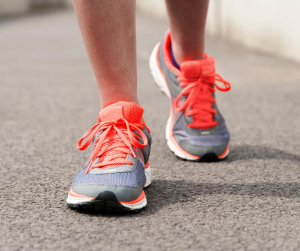 If you’ve been in to see our podiatry team in the past, you may wonder: how do we know exactly which shoes to recommend that’ll be the best for your feet?
If you’ve been in to see our podiatry team in the past, you may wonder: how do we know exactly which shoes to recommend that’ll be the best for your feet?
It’s a good question – and the truth is that it’s taken us years of experience as podiatrists combined with constantly staying up to date with the shoes that are coming out and their unique features. Today, we thought we’d take you into our world, simplify things a little, and give you an insight into six key things that we look at and think about before we recommend your perfect shoe.
We Look At Your Foot Type
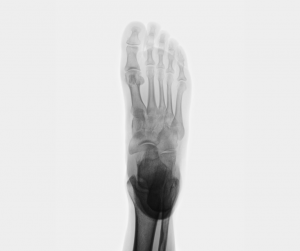 Knowing your foot type means that we can instantly rule entire categories of shoes out. Looking at foot type at a very basic level, we determine whether your feet are pronated (flatter), supinated (higher arched) or neutral. Of course, we also look at how much your feet pronate and supinate during each step, but that’s a different story.
Knowing your foot type means that we can instantly rule entire categories of shoes out. Looking at foot type at a very basic level, we determine whether your feet are pronated (flatter), supinated (higher arched) or neutral. Of course, we also look at how much your feet pronate and supinate during each step, but that’s a different story.
If you have flat feet, we’ll pair you with shoes that have in-built anti-pronatory support and control. The level of pronation support differs between shoes – some have only slight support, while others have a great deal. Knowing your foot type and your level of pronation will help us narrow our recommendations down.
Ruling out specific shoe groups are just as important at this stage. For example, the last thing we’d do is pair someone with high-arched feet with a shoe that gives pronatory support – and hence will push them further outwards and put them at risk of repeated ankle sprains.
We Look At The Features Of Your Feet
Your shoes should match the unique features of your feet. If you have a particularly wide forefoot, for example, we’ll recommend the styles and brands that have a variety of width options. As not all brands offer this (though more and more are now!), this will help narrow our decision. It may not be width either – but something like a bunion that needs accommodation from your shoes.
Other considerations may include the depth of the shoe, the height of your midfoot, your history or risk of injury and any support needed to offset this, and many more.
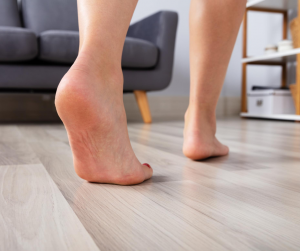
We Look At Your Level Of Activity
Will you be running? Hiking? Walking the dog? Training for a marathon?
The activities you’re doing, the kilometres you’ll be getting in, and even things like your weight will play a role in our decision-making too. You want a shoe to match your level of activity, and a cross-trainer won’t offer the same level of support and performance as a running shoe if you’re training for a marathon. The force you exert on your shoes makes us think about materials – opting for firmer materials if the force is high so you don’t run through your shoes in a month!
Your level activity also indicates the best-suited shoe weight – if you’re stacking up the kilometres then you want a shoe that is as light as possible while retaining full function and support.
We Consider Any Pains & Problems
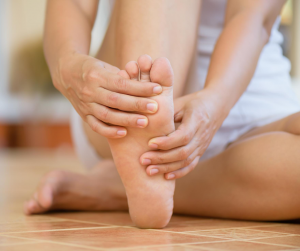 Any foot problems and pains are definitely at the top of our consideration list – as well as what’s causing them, and how shoes can help. From plantar fasciitis to problems with the Achilles, your shoes have the potential to help unload the damaged structures and promote better foot function – or add to the problem.
Any foot problems and pains are definitely at the top of our consideration list – as well as what’s causing them, and how shoes can help. From plantar fasciitis to problems with the Achilles, your shoes have the potential to help unload the damaged structures and promote better foot function – or add to the problem.
For example, if the biomechanical function of your feet means that you’re not doing the best job of naturally absorbing impact forces and your bones and joints are having to (painfully) absorb the forces instead, we’ll opt for shoes with more in-built cushioning to help.
We Add Our Knowledge Of General Good Shoe Features
There are certain features that are a must-have for us – like a firm shoe counter, a stable, supportive midsole and shoe shank, plenty of room in the toe box, a suitable heel height and stack height – and plenty more. Staying up to date with new footwear releases and new brands to the market means that we know which brands we can rule out, and which brands are reliable. Unsure what these terms mean? Check out our explanation of running shoe lingo here.
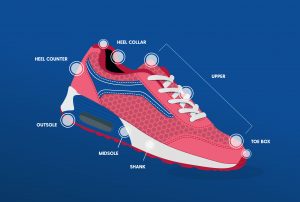
And We Get You To Try Them On & See What Feels The Most Comfy
Finally, we always have you try them on and make sure that they feel comfortable. Comfort is key – and it’s important to listen to your body if something feels off or if it doesn’t sit right. This is why we often give you multiple suitable recommendations and have you try them on and see what your feet say. One shoe definitely does not suit all!
Need Help Choosing The Best Footwear For Your Feet?
Many of our My FootDr centres have retail stores with knowledgeable staff that will help you find suitable shoes for your feet. While this is sufficient for some, others that have previously or are currently experiencing any pain or niggles will get the best outcome by having an appointment with their podiatrist – not just to recommend footwear but also treat the problem, help correct the cause – put the right measures in place to help prevent this problem from coming back in the future.
Book your appointment online by clicking here or call us on 1800 FOOTDR


